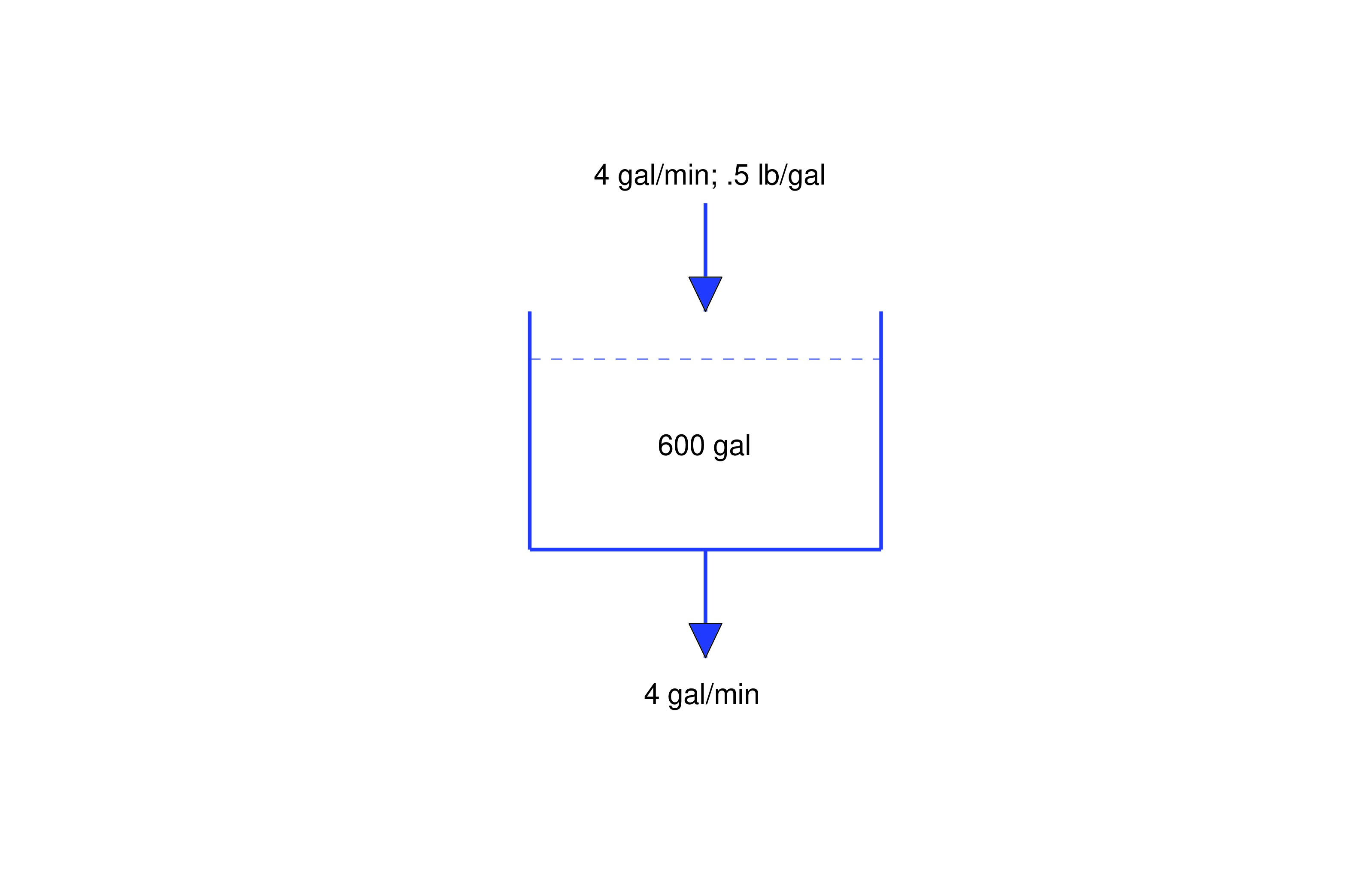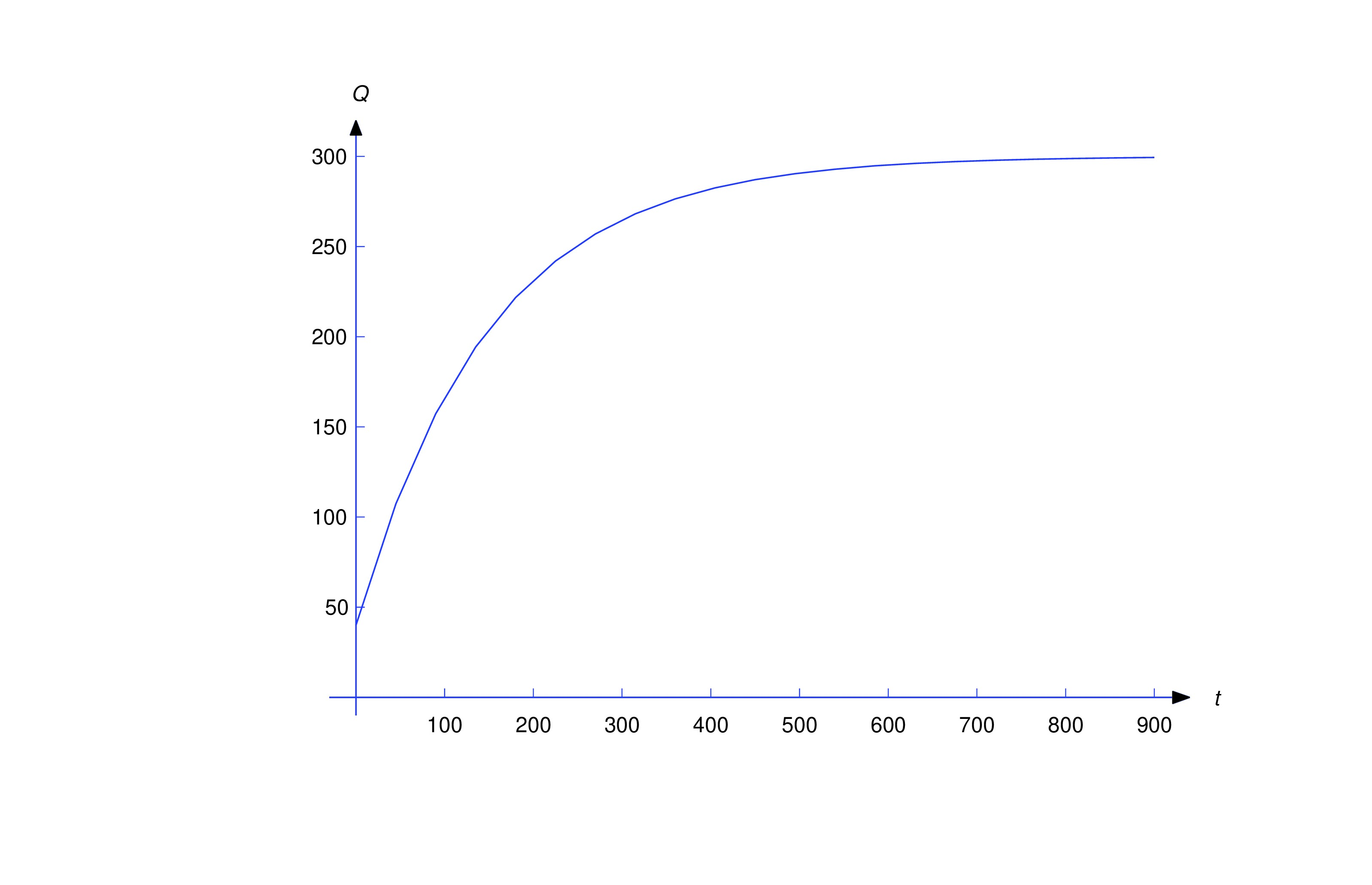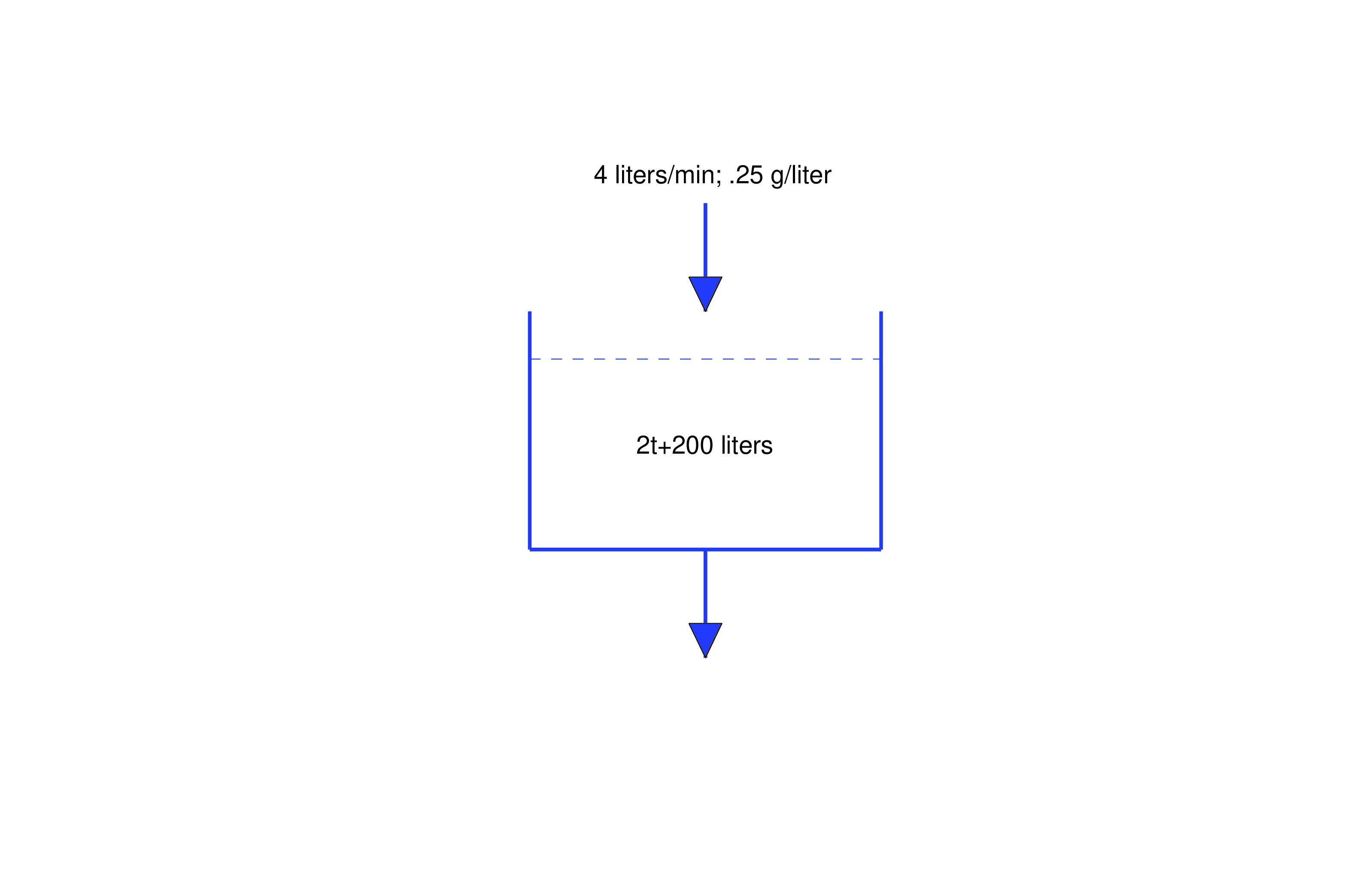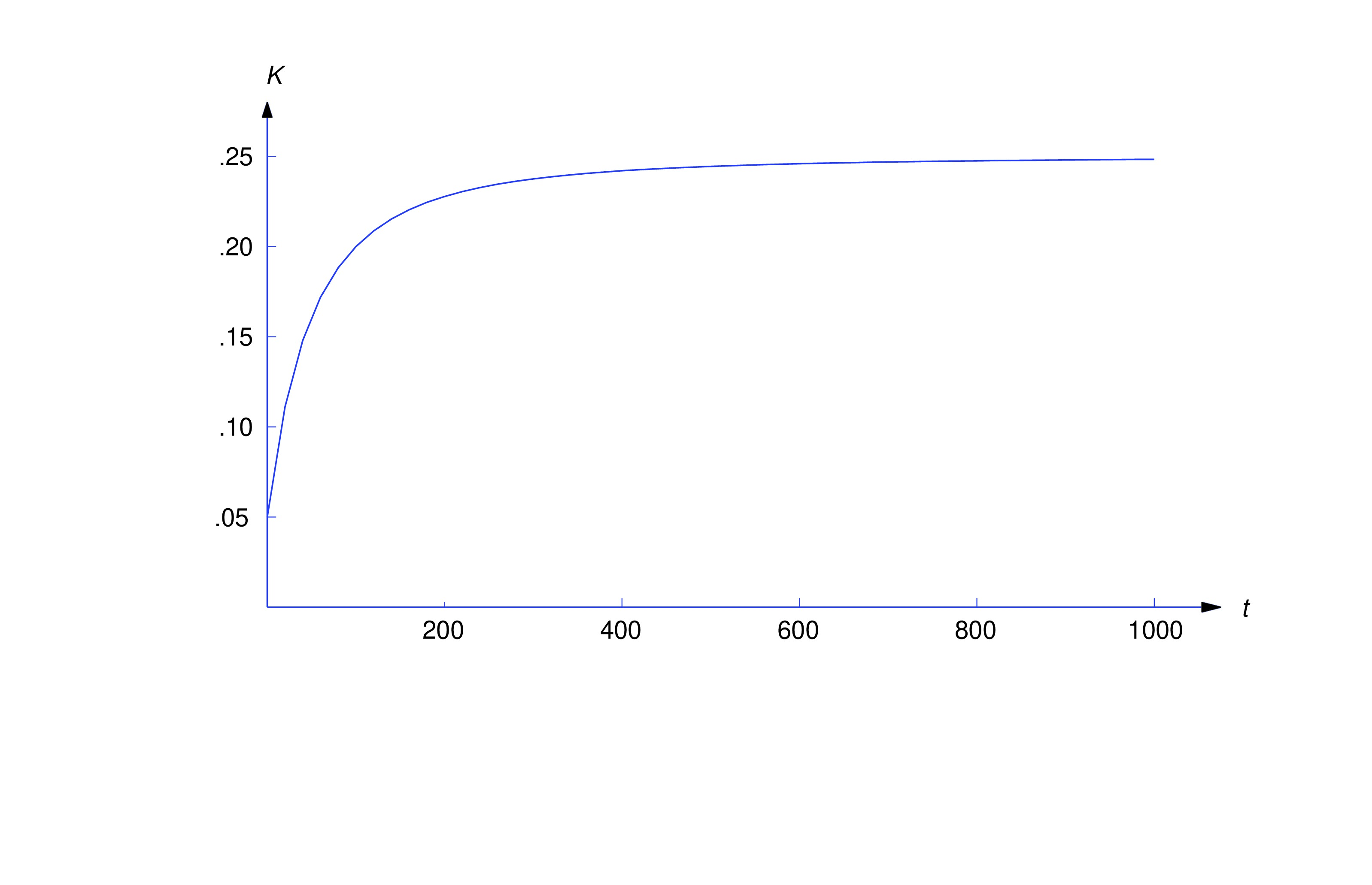Mixing Problems
In the next two examples a saltwater solution with a given concentration (weight of salt per unit volume of solution) is added at a specified rate to a tank that initially contains saltwater with a different concentration. The problem is to determine the quantity of salt in the tank as a function of time. This is an example of a mixing problem. To construct a tractable mathematical model for mixing problems we assume in our examples (and most exercises) that the mixture is stirred instantly so that the salt is always uniformly distributed throughout the mixture. Several exercises will deal with situations where this isn’t so, but the distribution of salt becomes approximately uniform as .

- (a)
- Find a differential equation for the quantity of salt in the tank at time , and solve the equation to determine .
- (b)
- Find .

Since , ; therefore,
item:4.2.3b From (eq:4.2.6), we see that that for any value of . This is intuitively reasonable, since the incoming solution contains pound of salt per gallon and there are always 600 gallons of water in the tank.

When will the tank overflow? minutes.
Find a differential equation for the quantity of salt in the tank at time prior to the time when the tank overflows and find the concentration (g/liter ) of salt in the tank at any such time.
We first determine the amount of solution in the tank at any time prior to overflow. Since and we’re adding liters/min while removing only liters/min, there’s a net gain of liters/min in the tank; therefore, Since liters (capacity of the tank), this formula is valid for .
Now let be the number of grams of salt in the tank at time , where . As in Example example:4.2.3,
The rate in is To determine the rate out, we observe that since the mixture is being removed from the tank at the constant rate of liters/min and there are liters in the tank at time , the fraction of the mixture being removed per minute at time is We’re removing this same fraction of the salt per minute. Therefore, since there are grams of salt in the tank at time , Alternatively, we can arrive at this conclusion by arguing that Substituting (eq:4.2.8) and (eq:4.2.9) into (eq:4.2.7) yields By separation of variables, is a solution of the complementary equation, so the solutions of (eq:4.2.10) are of the form Hence, Since and , (eq:4.2.11) implies that so and therefore Hence, Now let be the concentration of salt at time . Then The graph of is shown below.
Text Source
Trench, William F., ”Elementary Differential Equations” (2013). Faculty Authored and Edited Books & CDs. 8. (CC-BY-NC-SA)